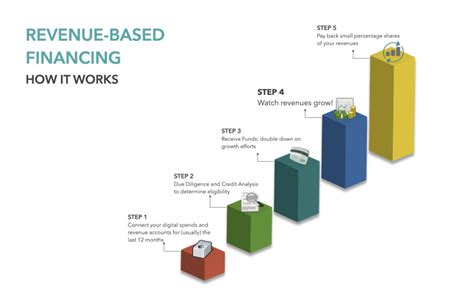How Does Revenue-Based Financing Work? A Complete Guide
Revenue-based financing (RBF) is a rapidly growing alternative to traditional financing for businesses. Unlike loans that require repayment of principal and interest regardless of performance, RBF ties repayments directly to a company's revenue. This makes it an attractive option for startups and scaling businesses who want to avoid the risks associated with debt financing. But how does it actually work? Let's break it down.
Understanding the Core Mechanics of Revenue-Based Financing
At its heart, RBF is a form of non-dilutive financing. This means that unlike equity financing (where you sell a portion of your company), RBF doesn't require you to give up ownership or equity in your business. Instead, you receive a lump sum of capital in exchange for a percentage of your future revenue for a set period.
Key Components of a Revenue-Based Financing Agreement:
- Advance Amount: The upfront capital you receive from the RBF provider. This amount varies depending on factors like your revenue, growth rate, and business model.
- Revenue Share Percentage: The percentage of your future revenue you agree to pay back to the provider. This is typically a fixed percentage for the duration of the agreement.
- Term Length: The timeframe over which you'll repay the advance, often ranging from 12 to 36 months.
- Minimum Revenue Threshold: Some agreements may include a minimum revenue threshold before repayments begin. This protects both the provider and the business.
- Merchant Services Integration: Many RBF providers integrate directly with your payment processing system to automatically track revenue and facilitate repayments.
How Repayments are Structured
Unlike traditional loans with fixed monthly payments, RBF repayments are directly proportional to your revenue. The more revenue you generate, the more you pay back. This flexible repayment structure is a major advantage for businesses experiencing fluctuating revenue streams. If your business has a slow month, your repayment will be lower. Conversely, strong sales months mean higher repayments.
The Benefits of this Revenue-Based Approach:
- Flexibility: Adapts to your business's performance.
- Reduced Risk: Repayments are directly tied to your success.
- Faster Access to Capital: The application and funding process is often quicker than traditional loan applications.
- Preservation of Equity: You retain full ownership of your company.
Who Benefits from Revenue-Based Financing?
RBF is a particularly good fit for businesses that:
- Have consistent and predictable revenue streams: While RBF tolerates fluctuations, a generally stable revenue is beneficial.
- Are experiencing rapid growth: The ability to scale quickly is a key factor in maximizing the benefits of RBF.
- Need capital without diluting ownership: Protecting equity is a primary driver for choosing RBF over equity financing.
- Require funding quickly: The speed of RBF is a significant advantage over traditional loans.
RBF vs. Other Funding Options: A Quick Comparison
| Feature | Revenue-Based Financing | Traditional Bank Loan | Equity Financing |
|---|---|---|---|
| Ownership | No dilution | No dilution | Dilution of Ownership |
| Repayment | Revenue-based | Fixed schedule | Dependent on Exit |
| Risk | Lower for the business | Higher for the business | Higher for investors |
| Speed | Often faster | Often slower | Can be slower |
Is Revenue-Based Financing Right for You?
Before pursuing RBF, it's essential to carefully assess your business's financial health, growth trajectory, and long-term goals. Understanding the terms of the agreement, including the revenue share percentage and repayment schedule, is crucial. Consider consulting with financial advisors to determine if RBF is the optimal financing solution for your specific circumstances. Remember, while RBF offers significant benefits, it's not a one-size-fits-all solution. Thorough research and planning are key to making an informed decision.
